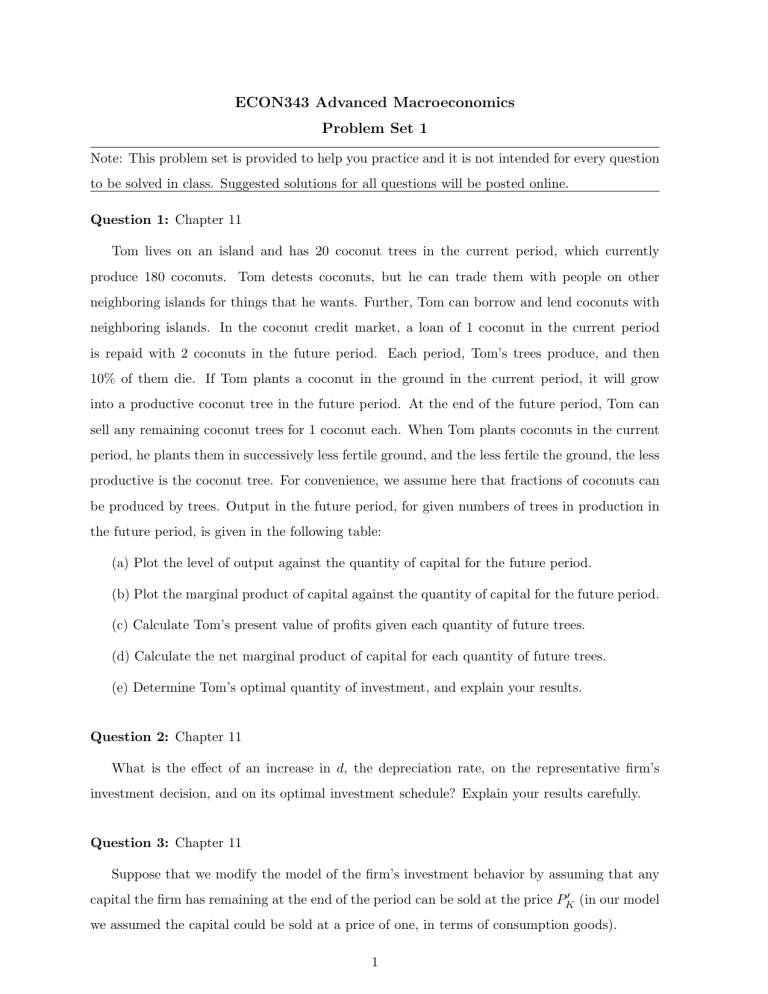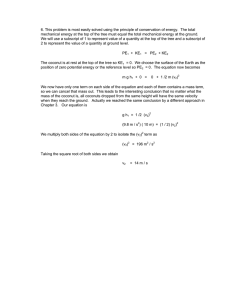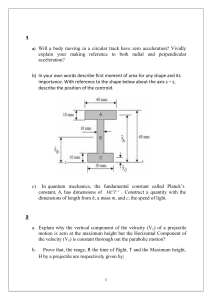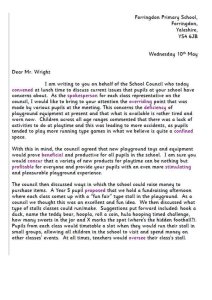
ECON343 Advanced Macroeconomics Problem Set 1 Note: This problem set is provided to help you practice and it is not intended for every question to be solved in class. Suggested solutions for all questions will be posted online. Question 1: Chapter 11 Tom lives on an island and has 20 coconut trees in the current period, which currently produce 180 coconuts. Tom detests coconuts, but he can trade them with people on other neighboring islands for things that he wants. Further, Tom can borrow and lend coconuts with neighboring islands. In the coconut credit market, a loan of 1 coconut in the current period is repaid with 2 coconuts in the future period. Each period, Tom’s trees produce, and then 10% of them die. If Tom plants a coconut in the ground in the current period, it will grow into a productive coconut tree in the future period. At the end of the future period, Tom can sell any remaining coconut trees for 1 coconut each. When Tom plants coconuts in the current period, he plants them in successively less fertile ground, and the less fertile the ground, the less productive is the coconut tree. For convenience, we assume here that fractions of coconuts can be produced by trees. Output in the future period, for given numbers of trees in production in the future period, is given in the following table: (a) Plot the level of output against the quantity of capital for the future period. (b) Plot the marginal product of capital against the quantity of capital for the future period. (c) Calculate Tom’s present value of profits given each quantity of future trees. (d) Calculate the net marginal product of capital for each quantity of future trees. (e) Determine Tom’s optimal quantity of investment, and explain your results. Question 2: Chapter 11 What is the effect of an increase in d, the depreciation rate, on the representative firm’s investment decision, and on its optimal investment schedule? Explain your results carefully. Question 3: Chapter 11 Suppose that we modify the model of the firm’s investment behavior by assuming that any 0 (in our model capital the firm has remaining at the end of the period can be sold at the price PK we assumed the capital could be sold at a price of one, in terms of consumption goods). 1 (a) Determine how this change affects the optimal investment rule for the firm. 0 as the firm’s stock price. If P 0 increases, what effect (b) Suppose that we interpret PK K does this have on the firm’s optimal investment schedule? What does this imply about the relationship between investment expenditures and stock prices? Question 4: Chapter 11 Suppose that there is a permanent increase in total factor productivity. Determine the implications of this for current macroeconomic variables, and show how the impact differs from the case where total factor productivity is expected to increase only temporarily. Explain your results. Question 5: Chapter 11 Suppose that z 0 and K decrease at the same time. Show that it is possible for the real interest rate to remain constant as a result. What does this say about the model’s ability to explain the lack of capital or investment in the economic status of an economy? 2 Trees in Production Future Output in the Future of Coconuts 15 155 16 162 17 168 18 173 19 177 20 180 21 182 22 183.8 23 184.8 24 185.2 25 185.4 3


![----Original Message----- From: [ ] Sent: Tuesday, March 22, 2005 10:42 AM](http://s2.studylib.net/store/data/015586648_1-cdcb6798a28b44967c90ad6d9b736542-300x300.png)
